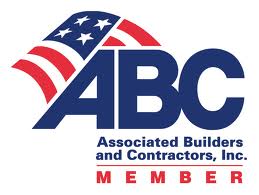Stellar, an architecture, engineering, construction and mechanical services firm, has earned the Associated Builders and Contractors' (ABC) highest national safety designation for 2011-the Safety Training Evaluation Process (STEP) Diamond-level award. Stellar was the only contractor in the Florida First Coast Chapter (with more than 140 member companies), and one of only four in Florida, to earn Diamond status.
There are six levels of STEP achievement: Participant, Bronze, Silver, Gold, Platinum, and Diamond. Member companies that achieve Diamond status-a new level established just last year-are an elite group. More than 2,100 ABC contractor members applied for the STEP program in 2011, with just 94 members achieving STEP Diamond status.
"Our most important goal is to send our employees and subcontractors home safe to their families, every day," said Philip Hinrichs, Stellar's Vice President of Risk Management. "That's why we develop a job-specific safety plan for each and every project and perform safety audits on a regular basis. We're proud to see these efforts recognized."
Stellar has achieved STEP certification 16 years in a row. Now widely accepted as the construction industry's standard measure of safety performance, the STEP awards were established in 1989 to evaluate and improve safety practices and recognize outstanding safety efforts. The award criteria include two industry benchmarks-the experience modification rate (EMR), which is applied to workers' compensation premiums, and the Occupational Safety and Health Administration's (OSHA) recordable injury and illness incidence rates (measured by the number of incidents per 100 employees per year).
STEP Diamond recipients must have long-term records of exceptional safety performance, with EMRs at or below 0.7 (a significantly lower rate than the national average of 1.0) and average incidence rates at least 50 percent below construction industry averages. EMRs, developed by the insurance industry, are based on comparisons of firms doing similar types of work. Lower rates, meaning that fewer or less-severe accidents occurred, result in lower insurance costs. BD+C
Related Stories
| Nov 18, 2014
New tool helps developers, contractors identify geographic risk for construction
The new interactive tool from Aon Risk Solutions provides real-time updates pertaining to the risk climate of municipalities across the U.S.
| Nov 18, 2014
5 big trends changing the world of academic medicine
Things are changing in healthcare. Within academic medicine alone, there is a global shortage of healthcare professionals, a changing policy landscape within the U..S., and new view and techniques in both pedagogy and practice, writes Perkins+Will’s Pat Bosch.
| Nov 18, 2014
Grimshaw releases newest designs for world’s largest airport
The airport is expected to serve 90 million passengers a year on the opening of the first phase, and more than 150 million annually after project completion in 2018.
| Nov 17, 2014
Nearly two years after Sandy Hook, the bloodshed continues
It’s been almost two years since 20 first-graders were shot and killed at Sandy Hook Elementary School in Newtown, Conn., but these incidents, both planned and random, keep occurring, writes BD+C's Robert Cassidy.
| Nov 17, 2014
Hospitality at the workplace: 5 ways hotels are transforming the office
During the past five years, the worlds of hospitality and corporate real estate have undergone an incredible transformation. The traditional approach toward real estate asset management has shifted to a focus on offerings that accommodate mobility, changing demographics, and technology, writes HOK's Eva Garza.
| Nov 17, 2014
Developments in 3D printing can assist architecture in the smallest details
Researchers at the Department of Energy’s Oak Ridge National Laboratory (ORNL) have developed a way for 3D printed metals to be produced with an unprecedented degree of precision.
| Nov 17, 2014
A new BSL-3 public-safety lab debuts in Vermont
The laboratory will be used to perform a wide range of analyses to detect biological, toxicological, chemical, and radiological threats to the health of the population, from testing for rabies, West Nile, pertussis and salmonella to water and food contaminants.
| Nov 17, 2014
'Folded facade' proposal wins cultural arts center competition in South Korea
The winning scheme by Seoul-based Designcamp Moonpark features a dramatic folded facade that takes visual cues from the landscape.
| Nov 17, 2014
Workplace pilot programs: A new tool for creating workspaces employees love
In a recent article for Fast Company, CannonDesign's Meg Osman details how insurance giant Zurich used a workplace pilot program to empower its employees in the creation of its new North American headquarters.















